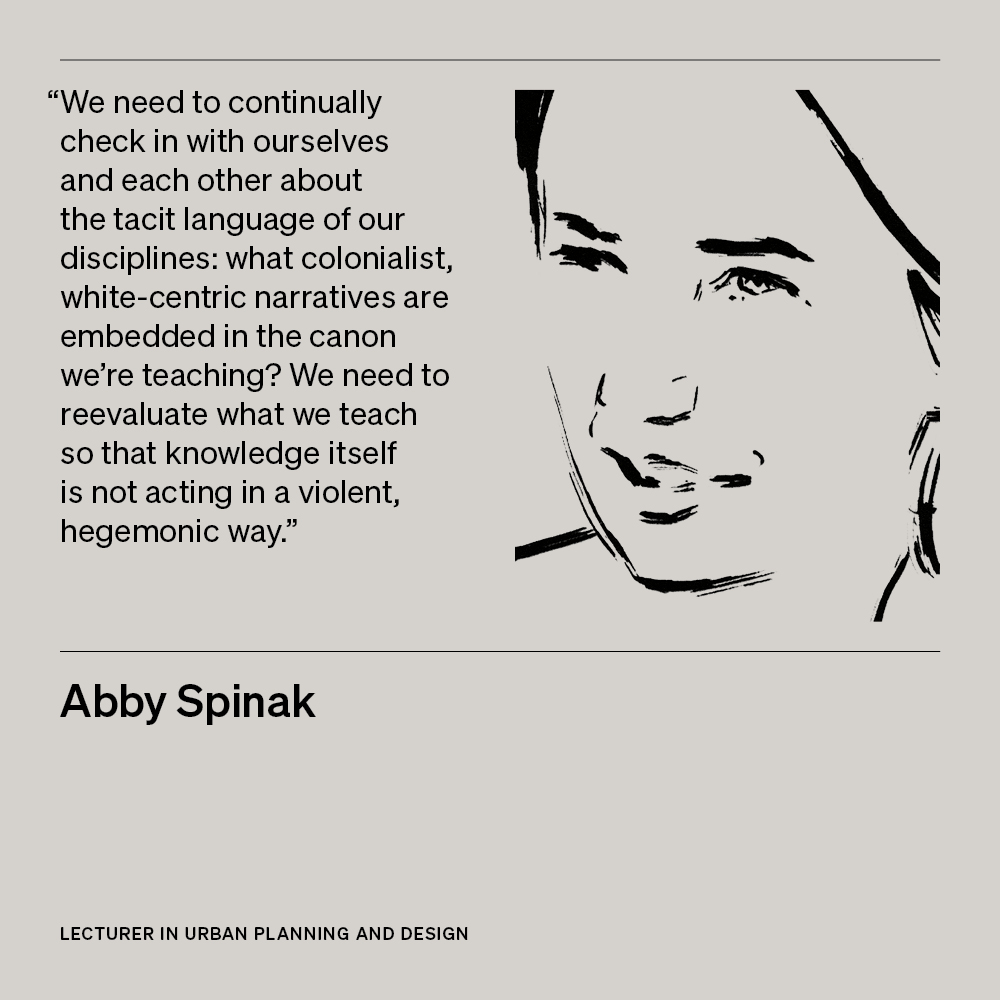Abby Spinak, Lecturer in Urban Planning and Design
From an urban planning perspective, how has the coronavirus pandemic challenged and reshaped cities as democratic spaces?
One of the prominent public narratives early on was that the protests would cause superspreading events. But by and large the same people protesting are also the ones advocating for social distancing and for more government accountability on suppressing the spread of COVID. This movement should be taken even more seriously because the people out there know the risks and are protecting each other to mobilize during a pandemic that is disproportionately affecting Black people. This, and of course the curfews and escalating police violence, show how both highly politicized and absolutely necessary urban public space continues to be, even in a pandemic.
How can planners leverage their skills to better serve the communities of color they’re supposed to represent?
The field of planning can learn a lot from Black activists and scholars about how to expand our basic conception of what’s possible, what growth means, and who gets to determine the path of evolution of the built environment and of our institutions. There are a lot of alternative future visions that activists and theorists have developed—planning as a discipline needs that diversity of futures. We can achieve it by listening to the conversations and work of these activists and including them in our teaching. It will also require an intense, no doubt painful, period of self-reflection, of understanding the true breadth of exclusion in planning education alongside other architecture and design disciplines. There’s a point where you have to ask, Beyond getting a seat at the table, who gets to design the table?
What about educational reform at the GSD?
We can learn so much from our students. Toni Griffin and I recently co-advised a student, Natasha Hicks, whose thesis questioned what it would look like to rebuild design education from a position of Black radical feminism. She started from the perspective that people come to learning with different expectations, and you need to meet them where they are. How do you develop a pedagogy for these different groups? Where do you start the conversation? What narrative tools do you need? What should they be reading?
In the short term, we must make sure that our syllabi reflect diverse voices and perspectives. I remove more white male authors from my syllabus every year. We need to continually check in with ourselves and each other about the tacit language of our disciplines: what colonialist, white-centric narratives are embedded in the canon we’re teaching? We need to reevaluate what we teach so that knowledge itself is not acting in a violent, hegemonic way.
In the hallowed halls of old institutions like the GSD, we are good at showing solidarity without necessarily turning that gaze on ourselves. It’s one thing to amplify voices, but maybe amplification in this context means that we, the white faculty, should shut up and listen.
Abby Spinak is lecturer in Urban Planning and Design and area head in the Risk and Resilience MDes area group. Spinak studies the history of “energy democracy.”
